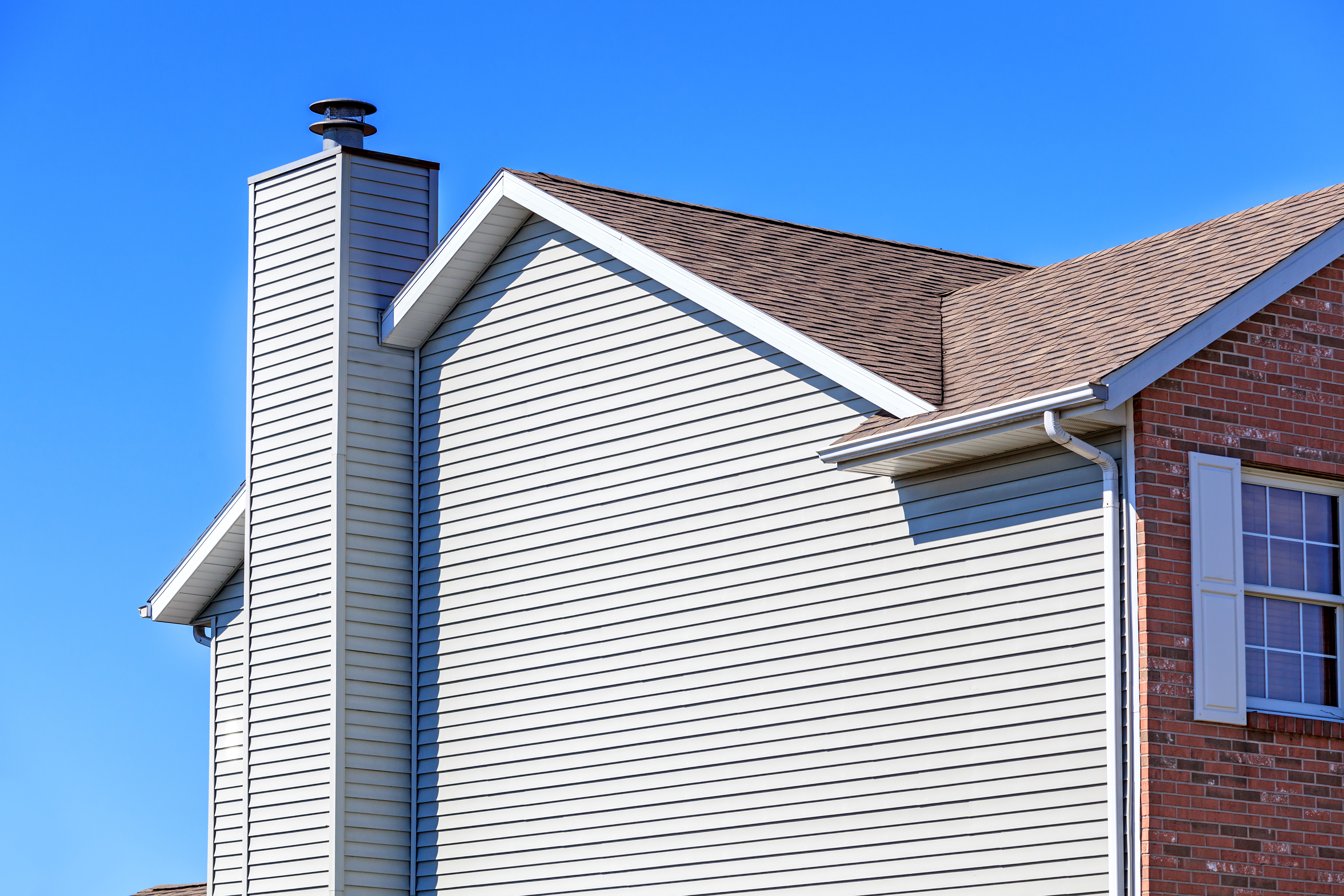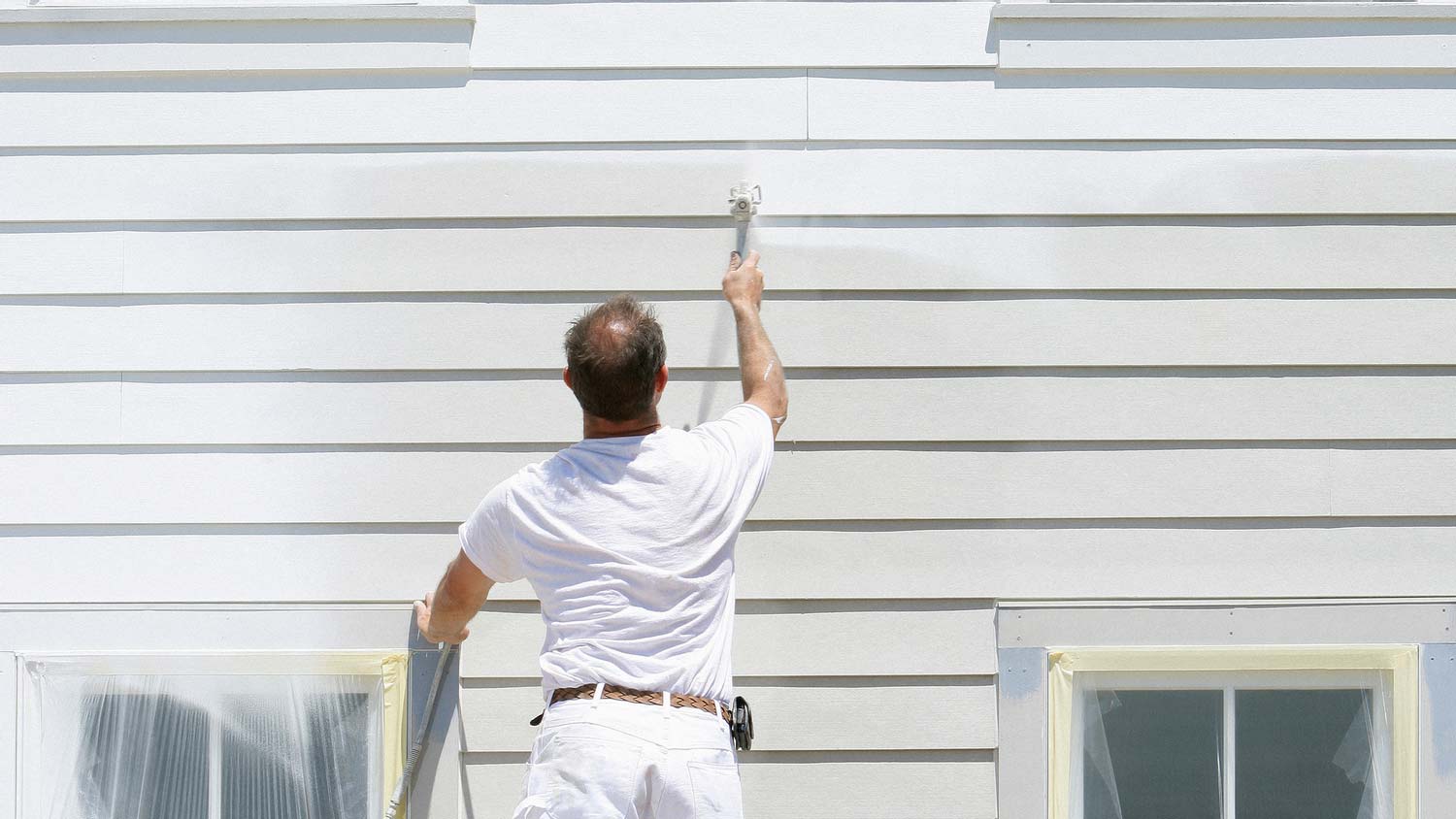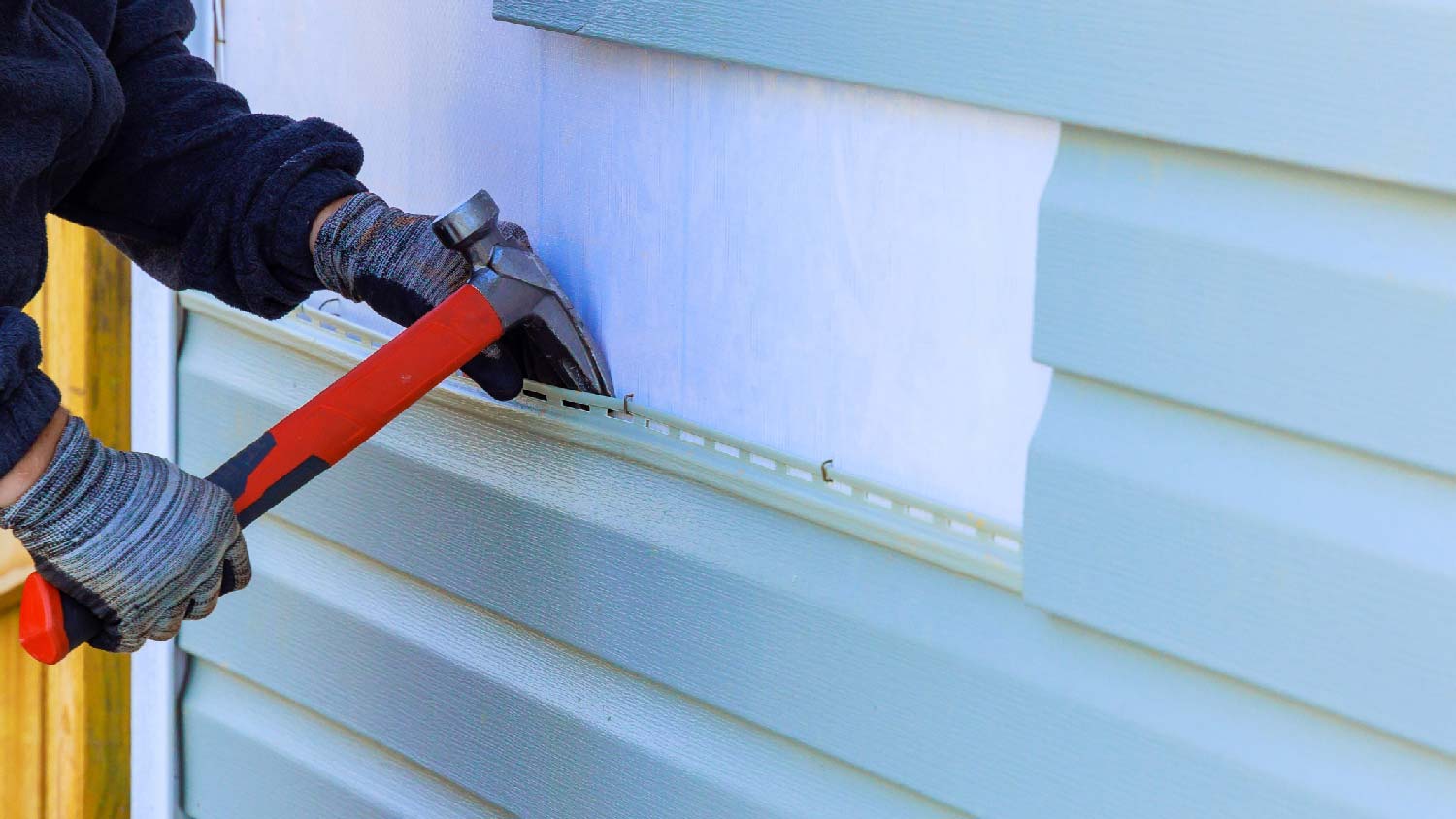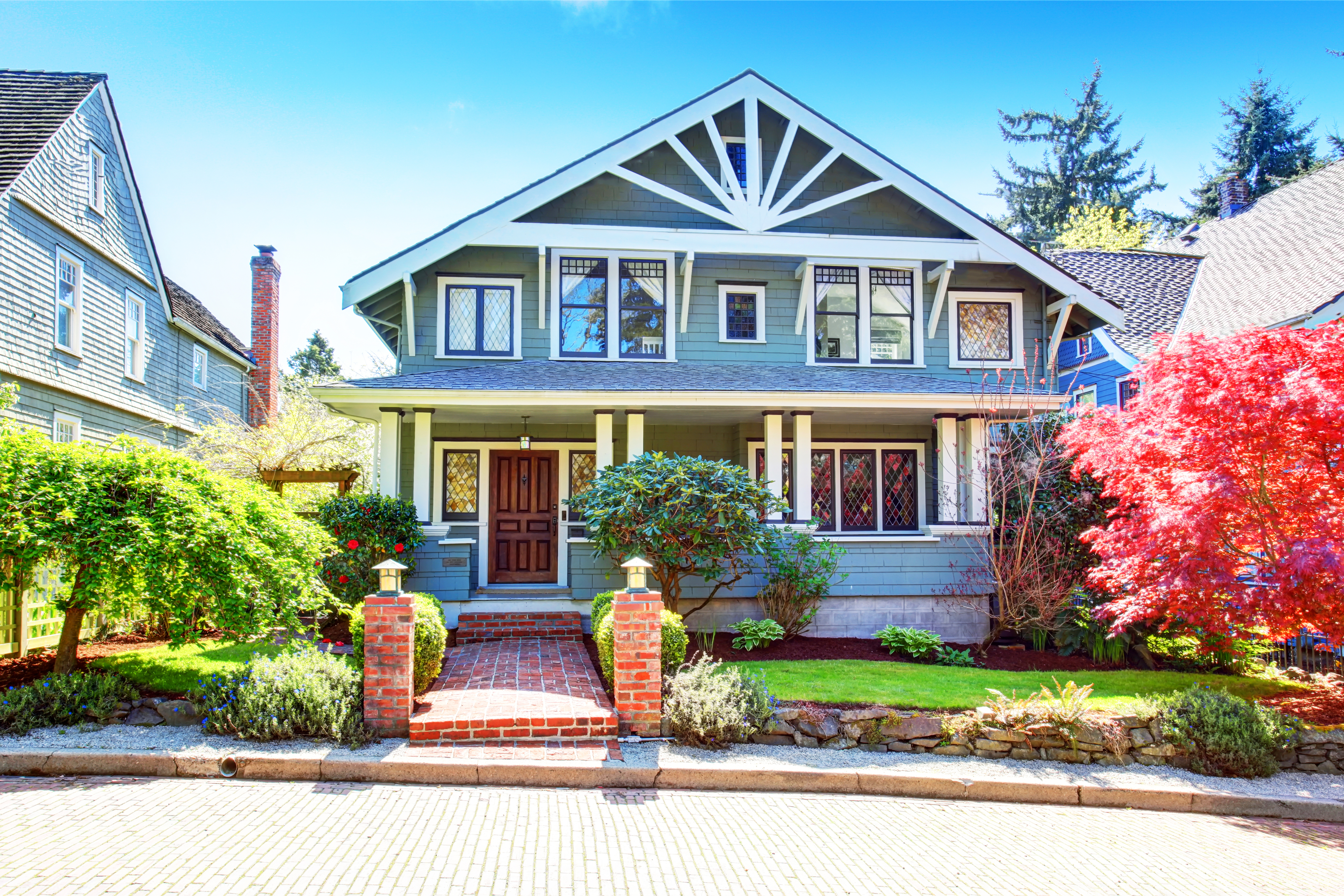
In addition to protecting against extreme Midwest temperatures, new siding in Columbus adds curb appeal. Learn about siding replacement cost in Columbus.
Siding service costs depend on your project and location. Check with a local pro for your specific job.
Liquid vinyl siding costs an average of $4 to $5 per square foot.
This siding must be ordered directly from the manufacturer and should be applied by a professional.
Liquid vinyl siding can be applied over many exterior surfaces, including wood, stucco, brick, and vinyl siding.
Liquid vinyl siding costs $4,421 on average, though it can cost as little as $250 on the low end or as much as $12,000 on the high end. The main factors impacting the price are the size of your house, the necessary permits, and the local labor rate.
Liquid vinyl siding (LVS) is an exterior coating that can be applied to a variety of existing kinds of siding surfaces. Made of polymers and resins that a siding contractor mixes on site, liquid siding offers the benefits of vinyl siding (durability) and paint (with multiple vinyl siding colors to choose from).
Depending on the mixture used, liquid vinyl siding is 10 to 15 times thicker than a coat of paint. It has been around since 1986, lasts for up to 30 years, and requires little maintenance (and no painting).
On average, liquid siding costs $4 to $5 per square foot, fully installed. Costs can be as low as $3 per square foot or as much as $6 per square foot. The table below shows how much you might spend on liquid vinyl siding based on the surface area to which you’re applying the material.
| Siding Square Footage | Typical Liquid Vinyl Cost Range |
|---|---|
| 500 | $1,500–$3,000 |
| 1,000 | $3,000–$6,000 |
| 1,500 | $4,500–$9,000 |
| 2,000 | $6,000–$12,000 |
On average, you’ll spend $0.60 per square foot for the liquid siding itself. You can contact specific manufacturers to learn more about their costs; you won’t find liquid vinyl siding in traditional home improvement stores like other types of siding.
Labor costs will vary by location, so where you live can affect how much you’ll pay for liquid vinyl siding. Homeowners in high-cost-of-living areas will pay more, as well as those who live in areas without many qualified liquid vinyl siding installers.
| Location | Average Cost Range |
|---|---|
| New York, NY | $6,100–$10,100 |
| Indianapolis, IN | $5,500–$8,600 |
| Raleigh, NC | $5,300–$8,200 |
| Houston, TX | $5,200–$8,000 |
| Oklahoma City, OK | $5,000–$7,900 |
| Tacoma, WA | $5,900–$9,600 |

There are two main sources of cost when installing liquid vinyl siding: the materials and the labor to install it. You can cut costs by attempting to DIY install the siding, but we highly recommend working with a professional for this type of work.
Labor costs range between $3 and $5 per square foot. Where you live and the number of stories on your home can impact labor rates. Houses with multiple stories require scaffolding and ladders, which adds time to the siding installation and risk to the project. Areas with a higher cost of living—typically urban and coastal areas—may have higher labor rates.
Get quotes from at least three siding contractors near you to get a better idea of how much labor rates are in your area.
You may be required by your municipality to obtain a permit before installing liquid vinyl siding. Work with your city and your contractor to understand what permits are required and how much they cost.

One of the benefits of liquid vinyl siding is that you can apply it to almost any type of existing siding—wood, brick, composite, aluminum, vinyl, you name it. However, if your existing siding is falling apart, rotten in places, or has suffered storm or pest damage, you may need to remove the existing siding (or at least portions of it).
Removing old siding can cost $0.25 to $0.75 per square foot—roughly as much as the material cost of the new siding itself.
Applying liquid vinyl siding might cost more than actual vinyl siding installation upfront (vinyl siding costs as little as $2 per square foot, installed). However, regular vinyl siding generally needs to be repainted every 10 years—two to three times during the average life span of liquid vinyl siding.
The average cost to paint vinyl siding is $4,000 for the typical 2,000-square-foot home. That’s $8,000 to $12,000 you won’t spend on painting costs during the life of your LVS.
We only recommend hiring a professional to install liquid vinyl siding. It’s a very specialized type of siding that only experienced pros should work with. You won’t find liquid siding on the shelves of your local home improvement store. Instead, you’ll order it straight from the manufacturer. Installation requires an understanding of how to mix the material and correctly apply it.
Maintaining liquid vinyl siding is totally doable on your own, on the other hand. In fact, you can simply rinse LVS with a garden hose as needed—even easier than cleaning vinyl siding.
Repairing liquid vinyl siding can be as easy as repainting, as long as the underlying material is still in good condition. Depending on how long ago your LVS was installed and the condition of the siding underneath it, it may be more cost-effective to repair rather than replace it.
| Factor | Repair | Replace |
|---|---|---|
| Repair vs. replacement cost | Repair is less than 50% of replacement cost | Repair is more than 50% of replacement cost |
| Siding age | Less than 20 years | More than 20 years |
| Extent of damage | Localized damage | Widespread damage |
| Underlying siding condition | Good condition, no underlying damage | Poor condition, underlying material needs to be repaired or replaced |
New siding can increase home value and see a return on investment (ROI) of up to 80%. Since liquid vinyl siding is applied over existing siding, the effect on your home’s value depends on the condition of the siding underneath it. Other factors that can affect the ROI include the quality of installation, how well it’s maintained, and any warranties that can be transferred to the new owners.
Home is the most important place on earth, which is why Angi has helped more than 150 million homeowners transform their houses into homes they adore. To help homeowners with their next project, Angi provides readers with the most accurate cost data and upholds strict editorial standards. We survey real Angi customers about their project costs to develop the pricing data you see, so you can make the best decisions for you and your home. We pair this data with research from reputable sources, including the U.S. Bureau of Labor Statistics, academic journals, market studies, and interviews with industry experts—all to ensure our prices reflect real-world projects.
Want to help us improve our cost data? Send us a recent project quote to [email protected]. Quotes and personal information will not be shared publicly.
From average costs to expert advice, get all the answers you need to get your job done.

In addition to protecting against extreme Midwest temperatures, new siding in Columbus adds curb appeal. Learn about siding replacement cost in Columbus.

Fiber cement siding is durable, fire-resistant, and affordable. Learn more about fiber cement installation costs in Columbus, OH.

The cost of siding repair varies depending on material, design, and damage. This helpful guide covers the siding repair costs to expect in Columbus, Ohio.

Cleaning your aluminum siding can give your home a fresh new look. Use this guide to learn exactly how to clean aluminum siding from start to finish.

Do you want to give your home a new fresh look? Check out these vertical siding options to figure out which type and style is best for your house.

When you need to reface your home, a low-maintenance siding option can last longer, keep more money in your pocket, and keep your home better protected.